I finally got around to reading Last Child in the Woods: Saving Our Children from Nature-Deficit Disorder by Richard Louv. That’s right—yesterday was a beautiful rare sunny day in early November, and I was sitting on the couch reading a book about how people don’t go outside anymore.
So I was inspired to go to nearby Powell Butte Nature Park and walk amongst the trees. 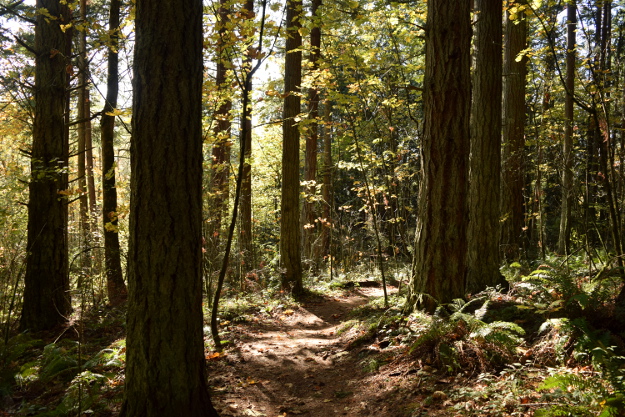
Powell Butte is an extinct volcano in outer southeast Portland. There’s a meadow on the top, but I stayed on the forested paths that wind along the southern slope, accessed by the Springwater Corridor bike trail.

The woods is dominated by Douglas fir (Pseudotsuga menziesii), western red cedar (Thuja plicata), and bigleaf maple (Acer macrophyllum) in the canopy; vine maple (Acer circinatum) and red alder (Alnus rubrum) in the understory; and western sword fern (Polystichum munitum) at ground level.
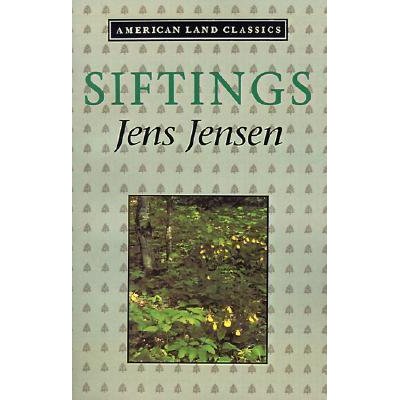
One of our nation’s first landscape architects, Jens Jensen, wrote a wonderful little book called Siftings in 1939. In one chapter, he talks about leaving northern Wisconsin and traveling across the country. He actually thought the northwestern forests were a bit of a letdown when he first saw them. Here’s what he said:
“Much had I heard of the grandeur of the landscape of the northwest… but when at last I had the opportunity of reaching that country, I was little thrilled with what I beheld. It lacked something I love—poetic charm and shy loveliness. Like all coniferous landscapes it was austere, dark, and gloomy compared with the deciduous forests.”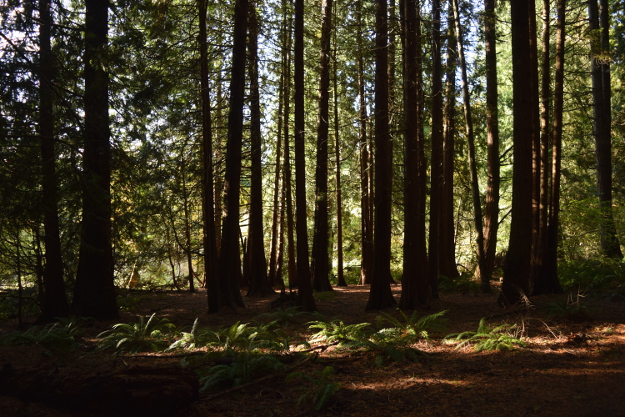
The part of the trail that passed under a near-monoculture of western red cedar was certainly dark and austere; even the tough old sword ferns struggled to survive in the feeble light.
But it smelled sooo good. That fresh, sweet, resinous, Christmas-tree scent made me feel blissfully relaxed. And the silence was peaceful. A plush carpet of fallen red cedar foliage deadened all sounds, save the occasional outburst from a bird or frog.

Gloomy? Not really. The northwestern forest is just a forest that sings its song in a different key than the one we midwesterners are used to.
We need to learn to let go of the sugar maples and embrace the bigleaf maples.
Say goodbye to the Dutchman’s breeches, Jack-in-the-pulpits, and Virginia bluebells, and celebrate wildflowers like fringe cups, inside-out flower, and this charming piggyback plant (Tolmiea menziesii), which makes new little plantlets on top of its older leaves.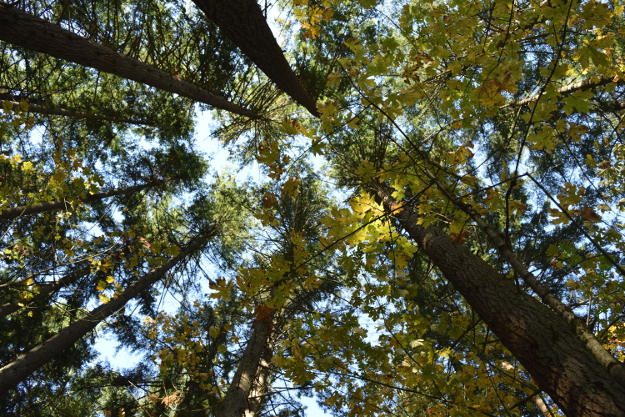
Marvel at how tall the trees are here! With ideal growing conditions and hardly any lightning to strike them down, they just grow and grow. As David Douglas, of “Douglas” fir fame said, “A forest of these trees is a spectacle too much for one man to see.”
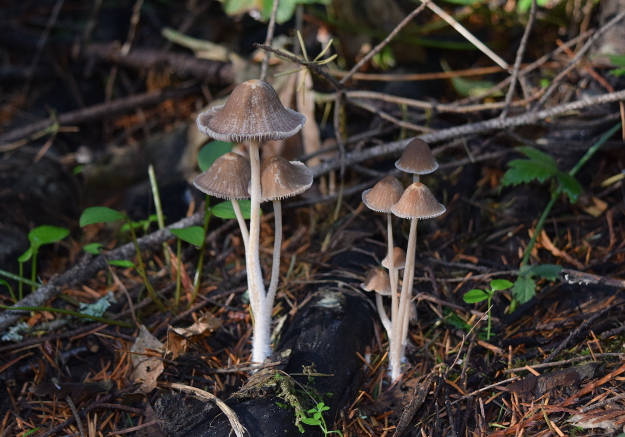
Explore the amazing variety of mushrooms that thrive in this climate.
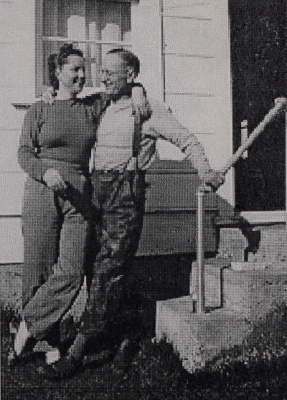
(Ruth Aakre Oswald, my first cousin twice removed, moved to Portland from Minnesota in the 1930s. She and her husband were amateur mycologists, and she discovered a mushroom that was named after her, Rhizopogon oswaldii. How awesome is that?)

We must also appreciate how the licorice ferns grow right out of the tree trunks.
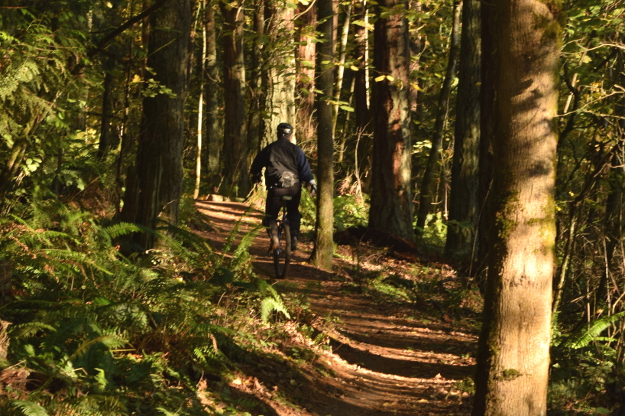
And savor the occasional spotting of a Dorkius maximus, or “unicyclist.”
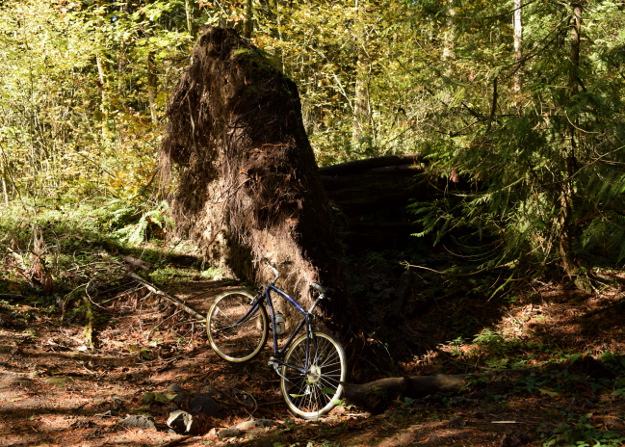
The forest has lessons to teach, too. Here a big double-trunked red cedar has fallen, exposing its huge pancake rootball. When will people understand that trees don’t have taproots, even conifer trees?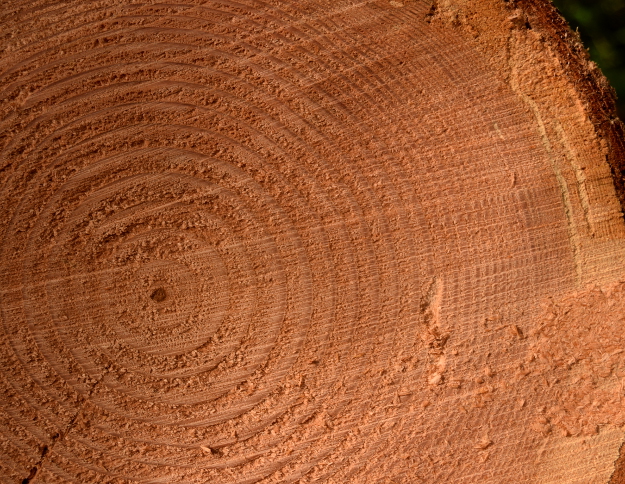
And a cut log on the trail offered up its secrets to me. Look at how fast this tree grew when it was young, and how slowly it grew once it got to be about 15 years old—and slower still as the years went by.

In Last Child in the Woods, Richard Louv laments the fact that kids don’t play in the woods or other wild places anymore, and they lack the connection with nature that many of us acquired in our youth.
I’m grateful to be among those who early on discovered a profound sense of peace in the woods, first in Minnesota, and later in the Ohio Valley. The setting and the players may have changed for me once more, but I can hear the song calling me still in another key. And it is beautiful.


I have to admit I find the woods here dark and gloomy . I ‘m going to read ‘ Siftings’ !
Do read it! It’s a short little breezy book but has some wonderful gems in it.
Good post! A long walk in the Olympic rainforest was one of the most memorable things I did on my first visit to the PNW, and it’s one of the things that brought me back here to live. I’m so glad you, unlike Jens Jensen, can appreciate it. Piggyback plant is one of my favorite natives.
One of the first things I did was to walk through Forest Park, which has much bigger trees than Powell Butte. It was awe-inspiring. I got a variegated piggyback plant from a friend and I love it.
I can’t imagine not finding the NW forests beautiful…I still feel amazed at them when we get out in them (not often enough)…they are truly magical, I think. Granted, I don’t think I’d want to live in a house surrounded by old growth forest…THAT might be a bit gloomy 😉
I do find myself wishing there was a little more diversity in the native plants here, but the sheer size and scale of the trees makes up for it. They are truly awe-inspiring. Still, I’m so happy someone offered well over list price for a house we were looking at that had 8 huge douglas firs in the backyard. I don’t know what I was thinking.